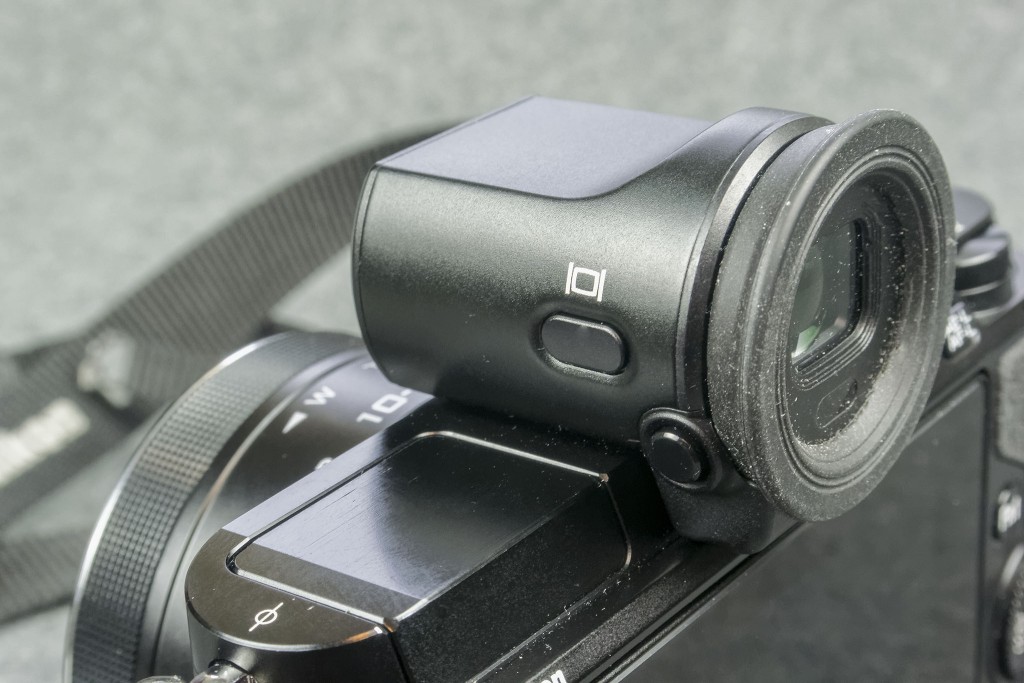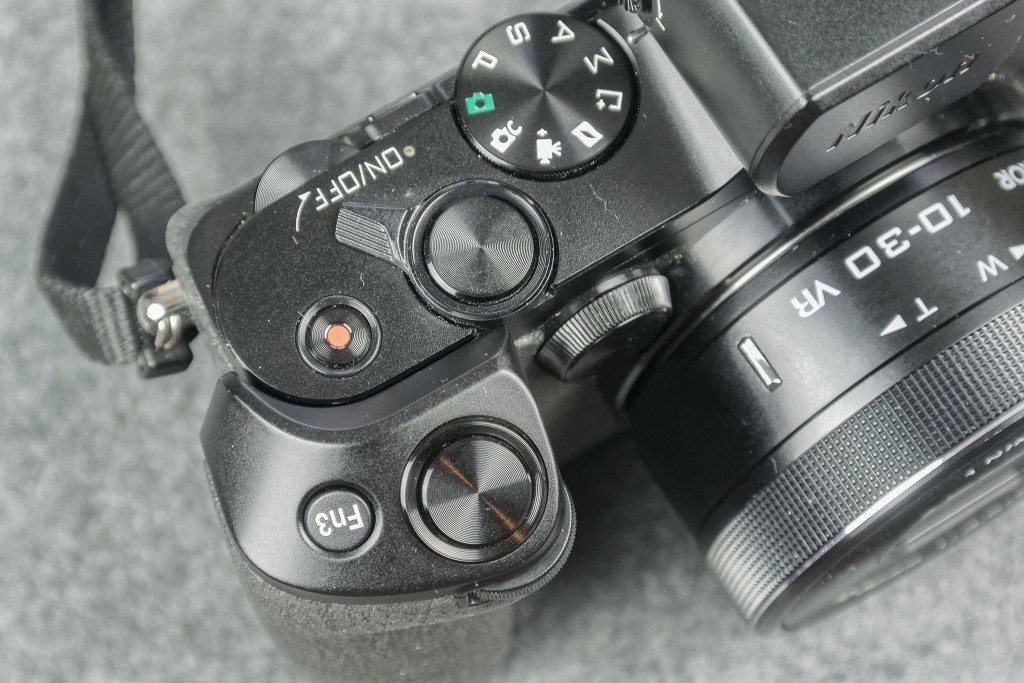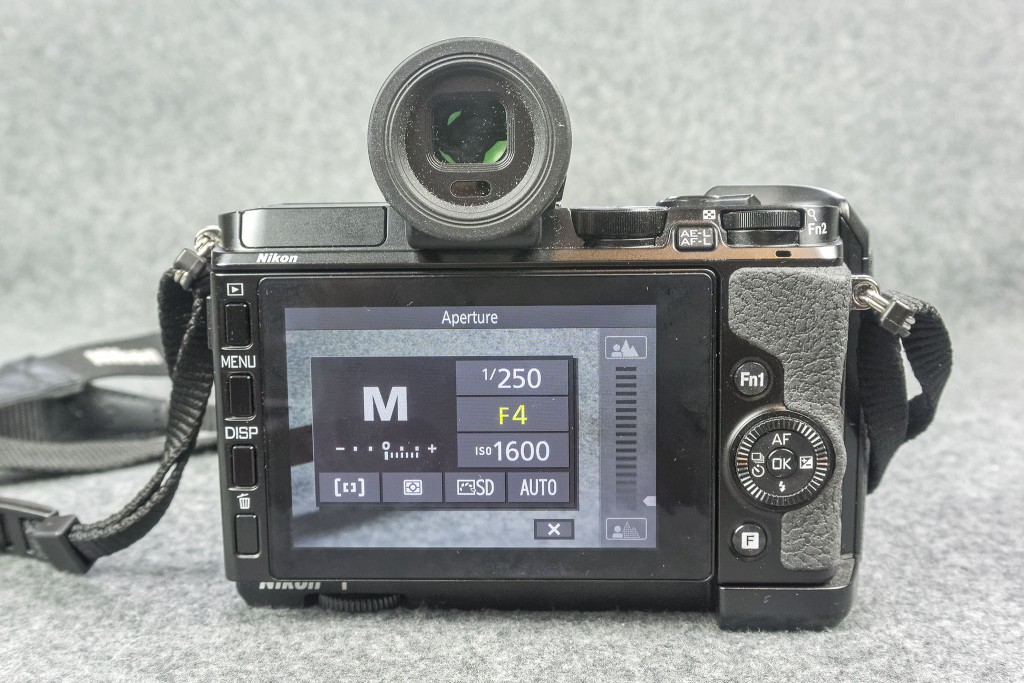Ever since Nikon announced the introduction of the Nikon 1 V3 back in March of 2014 the camera has been met with mixed reactions. Some of the design choices made with this camera left many photographers scratching their heads wondering what the engineers at Nikon were thinking when they put the concept for the Nikon 1 V3 together.
Specifically many people questioned the use of a microSD memory card, making the EVF and grip detachable, introducing yet another new battery, and coupling the Nikon 1 V3 with a new 10-30 PD zoom that does not accept filters.
As a result many people simply dismissed the Nikon 1 V3 out-of-hand and did not give it a serious look. That is unfortunate since the Nikon 1 V3 actually is a very good camera that brings a lot of new features and capabilities to the Nikon 1 system. It’s too bad that the camera did it in a three-steps-forward two-steps-back kind of way. Had Nikon not made those rather quirky design choices I think the camera would have been met with a much stronger and more positive reaction from the marketplace.
Note: click on images to enlarge
Handling and Controls
Let’s have a look at the Nikon 1 V3 in terms of its physical layout and functionality. With the detachable EVF and grip installed the Nikon 1 V3 is physically larger than the V2.
I originally thought that some of the design choices that Nikon made were due to trying to achieve production efficiencies with the Nikon 1 J4 by making the body panels the same size. I since checked the physical dimensions of the two cameras and they are indeed different so there is no apparent reason to me why the grip and EVF on the Nikon 1 V3 needed to be detachable.
From a handling standpoint the Nikon 1 V3, with the grip and EVF installed, delivers the most DSLR-like shooting experience of any previous Nikon 1 camera. With the grip attached users have 4 camera control buttons and 5 camera control wheels. All are positioned on the right-hand side of the body.
The main ‘F’ function button displays all major camera settings including shooting mode, shutter speed, aperture, ISO, white balance, picture control, metering mode and auto-focus mode. This is similar to the ‘F’ function button on the Nikon 1 V2, but the V3 has a larger, easier to read display and shows 8 camera settings rather than only 6 on the V2.
The other three function controls (Fn1, Fn2, Fn3) can all be assigned any one of 7 different functions (exposure compensation, metering, white balance, ISO, picture control, AF-area, and movie record button) so owners can customize the set-up of the Nikon 1 V3 to suit their specific shooting style. This really adds a lot of flexibility and functionality to the camera.
A separate AE-L/AF-L button has been added to the rear of the top panel of the camera and is very conveniently positioned for thumb activation. This is much better than having this control included on the rear wheel as it is with the V2.
AF modes can now be adjusted from the rear wheel of the V3 making this adjustment very quick to do, thus improving functionality.
There is a control wheel on the front panel tucked in between the lens and grip of the V3 that adjusts aperture. I found it awkwardly placed and inconvenient to use, but it does add to the overall functionality of the camera for those folks who can get accustomed to using it.
Overall, the Nikon 1 V3 provides a very pleasant shooting experience, giving users a wide range of external controls that significantly reduces the need to go into the menu to adjust settings. This will really appeal to folks who enjoy shooting with a DSLR. In fact, I think the V3 may have better external controls than many consumer DSLR models.
In addition to all of the external controls the Nikon 1 V3 also incorporates touch screen controls. These enable users to adjust various camera settings, choose the focusing point in the scene, as well as activate the shutter. Again, this adds to the overall functionality of the camera.
The V3 is the first Nikon 1 camera to incorporate a flip screen which provides even more functionality, making it ideal for event photography/videography where the camera often needs to be raised up over the heads of an audience. This would also be useful for macro-type photography where the camera may be positioned at unusual angles or close to the ground.
The Nikon 1 V3 also has built in Wi-Fi capability for those who like to have some additional flexibility when using their Smartphones with their cameras.
When pressed the DISP button activates a horizon tool that photographers will find very handy when shooting landscape images.











Hi tom,
I am a nikon 1 j5 user , and i am inspired by you. I bought j5 in may 2016 and i i’ve already 5 lenses.
And now i need your opinion. Somehow i miss the evf, and i felt a little distrubed changing lens all the time. I thought i’d like to buy a second camera.
The option are the v2 , v3 or just wait for v4 or j6 with evf maybe? If i choose v2, do you think it will be an upgrade for my gear? Since j5 has better performance than v2.
After i read this article i dont think v3 is an option, due to its high price and common performance with my j5. So should i wait for the v4 or j6?
Thx tom for your attention.
Edwin
Hi Edwin,
Having an extra body can make things easier, especially when travelling. A camera body with an EVF is preferred by many people as it makes it easier for certain types of images, birds-in-flight for example. During my recent trips I travelled with a pair of J5s and a V2, with a 1 Nikon zoom attached to each. It certainly made it very quick to capture my images and move on.
No one knows what Nikon will be doing with the Nikon 1 line up in terms of new bodies, although a J6 is the best bet. Whether it will have an EVF is unknown.
One option that you could pursue is a good, used V2 or V3. That way you could get your second body for an affordable price, while allowing yourself some time to see what Nikon does with future Nikon 1 bodies. The sensor in the J5 is better than the ones in the V2 or V3 so there is some trade-off. The V2 and V3 have larger buffers so they are better when shooting birds-in-flight in continuous auto-focus at fast frame rates.
Tom
great summary. i’d just like to add for some of us holding out for a V4, a regular hot shoe and Nikon CLS would be additional desirable features.
Hi whisky,
Glad you enjoyed the article! I added a regular hot shoe…thanks for catching that for me!
Tom
Thanks again Tom for the review. I have been shooting with the v3 exactly 3 times now and overall I am impressed. I am over the micro SD thing (I think) but that was a major strange move from Nikon. I also don’t like the grip remove to change the battery, but I love the additional dial it gives me to make my experience with it – just like my D7100.
One point I HATE is no battery icon until it is about out. Maybe I will adjust to that, maybe not.
You are spot on with the comments on body. I think they were trying to keep the J and the V in line, but the penalty is simply too high. Also the EVF isn’t nearly as good as the v2, colors and mine is dimmer as well.
I do however love the feel of the grip and the touch screen has been a wonder. So nice to touch and change! Also love the Fn buttons set for my preferences. I have my back knob set for exposure comp and can press and turn for adjustment – simply brilliant. For this reason alone – I will keep the v3.
IQ still shows the 1″ sensor but hey I love the portability that gives me.
70-300 arrives TODAY. I am thrilled about that add-on.
At the end of the day my v2 and v3 will stay with me.
Mike
Hi Mike,
Always great to hear from you – and I’m glad you liked the review! I think Nikon did a lot of things right with the V3…but also took a couple of steps backwards with it as well. Hopefully that will be corrected with a future V4. I think you will love the CX 70-300! I found it to be a great combination for birds etc. If you set the EVF to turn off the rear panel you’ll be amazed with how much the battery life is extended.
Tom
Hi Tom –
Thanks for the good review. While I have been eyeing the V3, I have opted to wait for the V4 before replacing the V1 (which I totally enjoy). Personally, I don’t see the issue with the micro SD card – I never remove my cards unless replacing them, because I transfer data via cable. I agree with you, too, that the V3 combined with the 70-300 seems to produce better images than the V2 and 70-300. Anyway, keep up the good work!
–Naomi
Hi Naomi,
Thanks for your positive comment – I’m glad you enjoyed the review! I was disappointed with some of the design choices that Nikon made with the camera, and like you, I’m waiting to see what happens with a future V4. Having said that, I did enjoy shooting with the V3 a lot more than I anticipated and found it to be a very capable camera. Interesting that you transfer data via cable. I’ve not done that but I think it is something for me to consider.
Tom
Great review!
I was going to buy a V3 but was put off by the external EVF, different battery and micro SD card. I hate micro SD cards – so small and fiddly and then you need to put them into a an SD card holder to read then.
I thought the money was better spent on the CX70-300 lens which is superb! I don’t regret my choice.
Oddly, I prefer the files from the V1. They are ‘grainier’ but seem more organic than the V2 files.
But, it’s going to be interesting to see what Nikon bring out for the V4! Like you, I hope it’s more V2 style.
Hi Bob,
I totally agree that the CX 70-300 lens is superb! I don’t regret buying mine either! The soon-to-be-released J5 is rumoured to have a new 20.8MP sensor and 4K video. If Nikon goes back to a V2 style of camera with the V4, keeps all of the good things with the V3 and adds the 4K etc. it may tempt me to buy a copy.
Tom